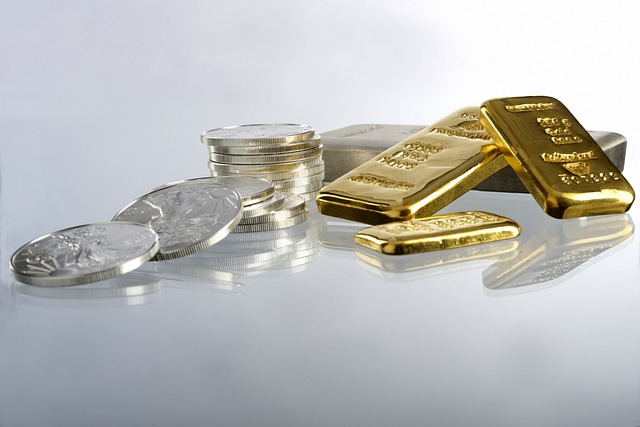Lear Capital Explains the Surprising Relationship Between Silver and Inflation
Inflation has been high for more than a year, which poses a number of economic challenges; however, it has also presented a unique opportunity for investors who are interested in physical silver assets, according to Kevin DeMeritt, founder of Los Angeles-based gold and precious metals firm Lear Capital.
“Silver has become a highly in-demand asset, yet the available supply hasn’t vastly increased,” says DeMeritt. “Numerous investors view silver as a hedge against inflation because it has tended to increase in price during periods of high inflation. Silver is also needed for industrial and clean energy processes — which could help drive its price to more than $30 an ounce this year.”
Inflation’s most recent period of escalation began in the spring 2021, when the consumer price index for all urban consumers, often regarded as a key inflation gauge, initially increased by 0.6%. Inflation eventually hit 9.1% in mid-2022, the highest level it had reached since 1981.
Following a series of increases to the federal funds rate’s target range that the Federal Reserve’s Federal Open Market Committee made between March 2022 and March 2023, inflation has since somewhat rescinded — reaching 5% as of last month, the latest date for which the Bureau of Labor Statistics has released data.
It is still, however, above the Fed’s desired 2% goal. If inflation continues to move downward at its present pace, reaching that point could take some time.
“It’s been a long time since we’ve had this kind of inflation,” Kevin DeMeritt says. “You have to go all the way back to 1978 to get to the rates that we have today. Inflation ended at 15% in 1980; we may only be halfway to the top if inflation plays out like it did in the ’80s.”
A Growing Importance
The economy may be struggling; the silver market, though, is thriving, due to the considerable demand for the precious metal, which has grown consecutively for the past two years.
Although some of the utilizations for silver have declined over time — such as its use in film, which cellphone cameras have largely replaced the need for — others, like silver’s role in green energy production, have expanded considerably. With, as the U.S. Geological Survey notes, a particularly
high optical reflectivity and thermal and electrical conductivity, silver has been incorporated into mirrors, electronics, and numerous other items.
The amount of silver that’s excavated each year ticked upward from approximately 781 million ounces in 2020 to 822 million ounces in 2021, according to the nonprofit Silver Institute association; however, because there’s only so much in existence, the remaining supply continues to become even more coveted, both by individuals who want to invest in physical precious metal assets and various industries that need silver to execute key processes.
“You have this industrial demand really pushing up silver [prices],” Kevin DeMeritt says. “It’s very difficult for us, as dealers, to actually go out and get silver bars and silver coins in big quantities. Silver right now just has an incredibly distinct advantage — even over gold. There’s going to be demand for silver from industrial uses, regardless if investors purchase it or not.”
In recent years, silver’s use in environmentally friendly applications has been a prominent force behind the strong demand for the asset — including solar photovoltaic power production, today’s leading source of green electricity and a growing capability in the U.S. Between 2017 and 2022, the country tripled its solar photovoltaic abilities nationwide, according to Deloitte research.
An Intriguing Silver Investment Scenario
Over the past year, silver demand has increased in tandem with the cost of living; which isn’t the first time both have edged higher at the same time.
Silver’s price has actually risen in the past during times of economic difficulties. In 1980, for instance, when the U.S. was experiencing high inflation, silver’s price shot up 557%, according to a Lear Capital analysis.
“Gold and silver have historically performed very well in times of inflation,” Kevin DeMeritt says. “Gold was up 300%, silver was up 500% in the 1970s, which was the last time we saw inflation [as] high [as it’s been in the past year].”
With the continued focus on green energy — the majority of Americans want the U.S. to work on developing renewable energy sources, such as solar power, in the next decade and a half, according to a 2022 Pew Research Center survey — and silver’s other uses, Kevin DeMeritt anticipates the demand for the precious metal is likely to remain high.
The continued interest in silver could make it a viable portfolio addition in the coming months, when investors may be looking for options that will provide steady returns to help offset some more volatile investments, such as stocks.
“It’s a pretty good hedge against inflation,” the Lear Capital founder says. “It [increased] from about $7 up to $50 an ounce the last time inflation ran [high]. With the inflation we have, the silver market should be much, much higher — and when you add in that extra component [of] industrial demand, you get some stability. With inflation and [a] recession looming, we’re starting to see people take some portion of [their investments] and move [them] over to have the diversification [of] precious metals.”
Today’s current prices for silver — approximately $21.15 as of April 29, per Lear Capital’s online pricing resource — which Kevin DeMeritt says are reasonable, compared to previous amounts, may add to the precious metal’s ongoing investment appeal.
“Silver’s just absolutely on sale,” he says. “The last time gold traded at this level, [around] $1,900, silver was $47 an ounce — and [it’s about] half of that [price] now. The silver market is an incredible opportunity for a long-term investor [who’s] looking, [in] the next three to five years, to get a great inflationary hedge — but also some great results with appreciation from the silver market.”

